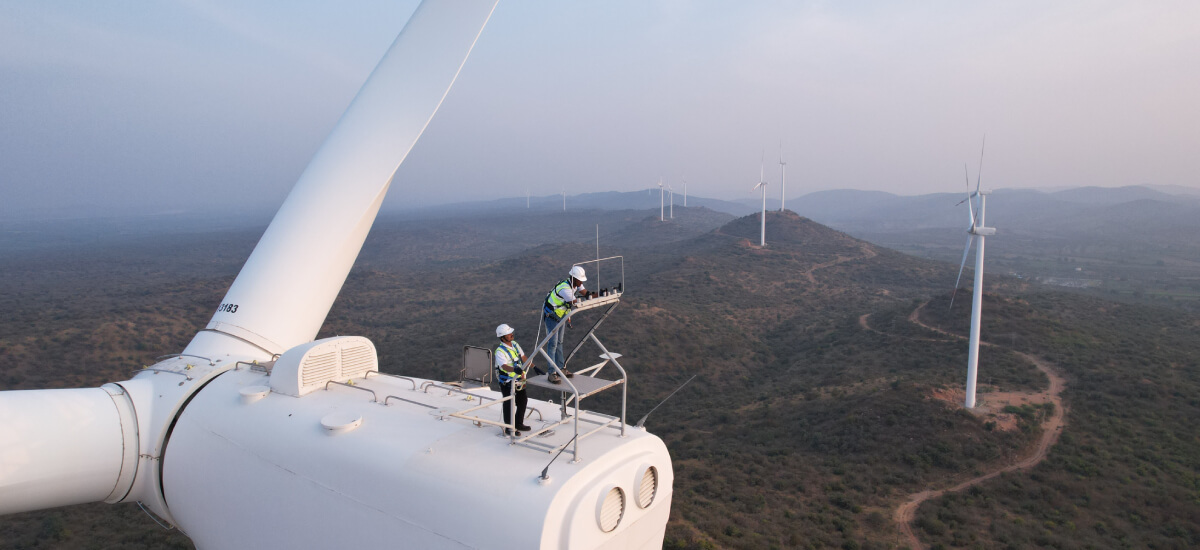Solar Manufacturing Team
30 August 2024
ReNew
Technology has empowered us to harness solar energy for a bright and energy-efficient future. However, the success of harnessing this renewable power source hinges on the efficient installation of solar panels. The effectiveness of a good solar energy system is not just determined by the panels used but also by how well the system is installed. A well-executed installation is the key to enhancing energy efficiency as the quality of the installation process has a direct impact on the longevity of your solar panels and the overall performance of your solar energy system. Poor installations lead to disruptions, inefficiency, and safety hazards, costly repairs over time, and lower energy output. Here, we will explore some of the best practices for solar panel installation and why paying attention to detail during this critical stage is crucial for maximizing energy production and getting a higher return on your investment. We will also discuss their implications on energy efficiency, longevity, and overall system performance.
The Role of Site Assessment in Solar Panel Installation
One of the most crucial steps of an efficient solar installation is the site assessment. The quality and condition of the site has a direct bearing on the longevity and efficiency of the system. A detailed assessment conducted during the installation helps in determining the best position of panels to maximize sun exposure thus leading to optimal energy generation throughout the day. Apart from this, a well-executed site assessment also identifies potential shading issues from nearby buildings or trees that can reduce the energy output significantly. Another aspect that needs to be kept in mind during a site assessment is to check the roof's integrity. Installing solar panels on the roof should be done only after the roof's integrity has been inspected, in order for it to be able to withstand the weight of the system.
Choosing the Right Installation Method
Once the site assessment is done, the next crucial step in solar panel installation is to choose the installation method that is most suitable for the given site. The three commonly used methods are tracking systems, ground-mounted and roof-mounted. Tracking systems are slightly more expensive than the rest, as they track the sun's movement to optimize the energy capture throughout the day. The ground-mounted method gives more flexibility in terms of positioning, making it more suitable for larger properties where there is more ground space and a scarcity of roof space. Lastly, the roof-mounted method is more commonly used in residential spaces and provides space efficiency.
Electrical Connections: Ensuring Safety and Performance
High-quality connections ensure that the electricity generated by the solar panels is transferred to the inverter efficiently and safely, and then to the house and power grid. Poor or damaged electrical structures like loose or substandard wiring can lead to significant energy loss, thus, resulting in inefficient system output. Faulty electrical connections also cause safety hazards and increase instances of system failures or electrical fires.
Structural Integrity and Weatherproofing
Weatherproofing and strong structural integrity are the two pillars of a good and efficient PV panel installation. Most solar panel installation companies would advise to get weight-bearing structure weatherproofed in order to increase longevity. Protecting the system from extreme and harsh weather conditions like heavy rain, hail storms, wind, etc. is also important if one does not wish to keep incurring repair costs.
The above are some of the best practices for effective solar panel installation. In addition to these, there are a few more precautions that one should keep in mind.
- Monitoring and maintenance for better long-term performance.
- Use of high-quality materials.
- Installation done in compliance with local regulations.
- Lastly, ensuring that the installation is done by professionals.
Once you decide to invest in a better and brighter future, it is advisable to do thorough research on the steps involved in getting the right solar panel for your needs.
In order to learn more about us, reach out to us at pv.marketing@renew.com.









 (1).png)
 Urji Calculator
Urji Calculator